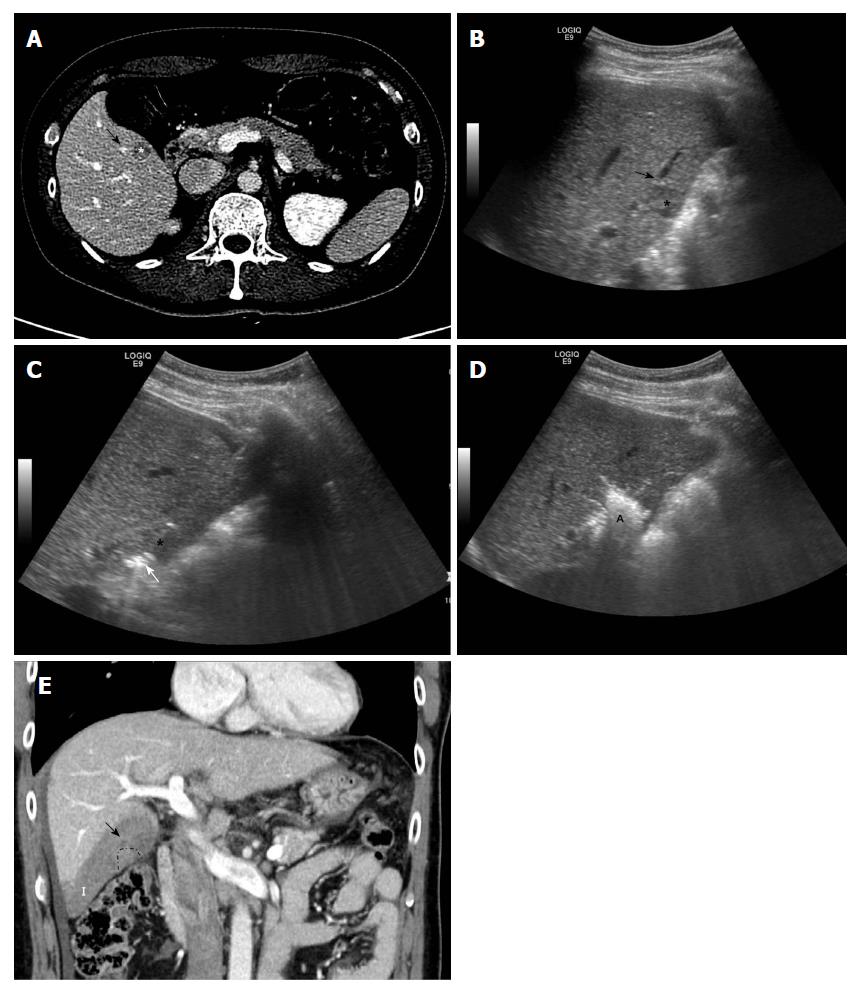Copyright
©The Author(s) 2018.
World J Gastroenterol. Dec 21, 2018; 24(47): 5331-5337
Published online Dec 21, 2018. doi: 10.3748/wjg.v24.i47.5331
Published online Dec 21, 2018. doi: 10.3748/wjg.v24.i47.5331
Figure 2 Images showing subsegmental hepatic infarction after radiofrequency ablation for perivascular hepatocellular carcinoma.
A: Axial computed tomography image obtained during equilibrium phase shows 1.3-cm hepatocellular carcinoma (asterisk) in segment V before radiofrequency (RF) ablation. The index tumor is in contact with the right portal vein (black arrow); B: Planning ultrasound image obtained before RF ablation shows the low-echoic-index tumor (asterisk) in contact with a right portal vein (black arrow); C: During RF ablation, the RF electrode (white arrow) is inserted into the index tumor (asterisk), evading the adjacent portal vein; D: At the end of the procedure, a hyperechoic ablation zone (A) completely covered the index tumor; E: Thrombosis within the peritumoral portal vein (black arrow) developed around the index tumor (dotted line), shown on coronal computed tomography images obtained immediately after RF ablation. This led to subsegmental infarction (I) in the peripheral area of hepatic segment VI.
- Citation: Kang TW, Lim HK, Cha DI. Percutaneous ablation for perivascular hepatocellular carcinoma: Refining the current status based on emerging evidence and future perspectives. World J Gastroenterol 2018; 24(47): 5331-5337
- URL: https://www.wjgnet.com/1007-9327/full/v24/i47/5331.htm
- DOI: https://dx.doi.org/10.3748/wjg.v24.i47.5331









